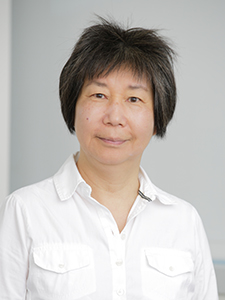On Tuesday, May 23, the National Institute on Deafness and Other Communication Disorders (NIDCD) researcher Doris Wu, PhD, chief of the NIDCD Laboratory of Molecular Biology and the Section on Sensory Cell Regeneration and Development, will present the next talk in the NIDCD’s “Beyond the Lab, Understanding Communication Disorders” speaker series, the NIDCD announced on its website. She will discuss how the inner ear develops and how it enables us to hear and maintain our balance.

Designed for administrative and support staff as well as scientists, the “Beyond the Lab” series gives NIH staff and the public the opportunity to learn about the NIDCD’s research and about scientific advances in communication disorders—conditions that directly affect about one in six Americans during their lifetime, according to the NIDCD. The goal of the series is to present the science of the NIDCD’s mission areas in ways that everyone can understand. The series is open to the larger NIH community and to the public.
- What: “The Making of the Inner Ear,” presented as part of the NIDCD Beyond the Lab, Understanding Communication Disorders speaker series
- Who: Doris Wu, PhD, chief of the NIDCD Laboratory of Molecular Biology and the Section on Sensory Cell Regeneration and Development
- When: Tuesday, May 23, 2017 from 11:00 a.m. to Noon
- Where: Dale and Betty Bumpers Vaccine Research Center, Building 40, Rooms 1201/1203, National Institutes of Health campus, Bethesda, Maryland
The presentation will also be available via videocast.

About the Speaker
Doris K. Wu received her bachelor’s degree from the University of Wisconsin at Stevens Point, her master’s degree from the Department of Physiology at the University of Southern California, and her PhD from the Department of Anatomy (currently the Department of Neurobiology) at the University of California at Los Angeles (UCLA). She received her postdoctoral training from the Mental Retardation Center (now the Intellectual and Developmental Disabilities Research Center) at UCLA and from the Department of Genetics at Harvard Medical School. She joined the NIDCD in 1993 and has published many papers on the molecular mechanisms underlying inner ear development.
Source: NIDCD
Images: NIDCD



